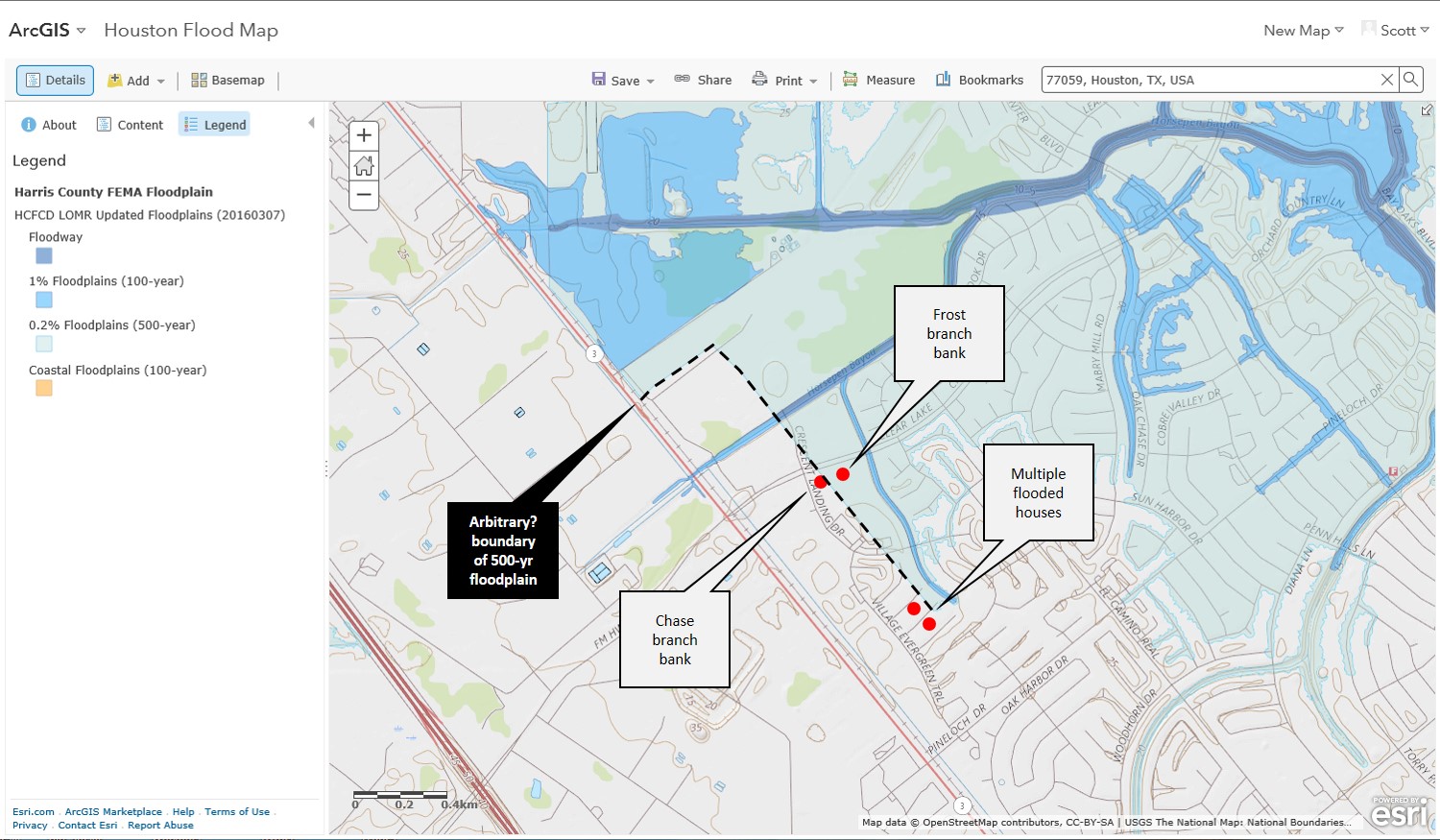Arbitrary floodplain boundary example

While researching actual damage to businesses during Hurricane Harvey in my local area of Harris County, I found a Houston Chronicle article entitled "Harvey floods damaged 100s of safe-deposit boxes". The article was written by Paul Takahashi and is dated October 2, 2017. https://www.houstonchronicle.com/business/article/Harvey-floods-damaged-100s-of-safe-deposit-boxes-12247152.php Mentioned in the article is that the Clear Lake City Boulevard branch of Chase Bank was one of nine branches that were flooded during Harvey. Driving by that area in the aftermath of Harvey I had noticed that the building was closed for repairs. The nearby Frost Bank branch was also closed. It is likely that if these two buildings were flooded then a number of other nearby structures in the area were also flooded. I was able to identify an area of flooded homes south of the Chase branch bank building in the Bay Knoll subdivision. One of the themes of this blog is co...


